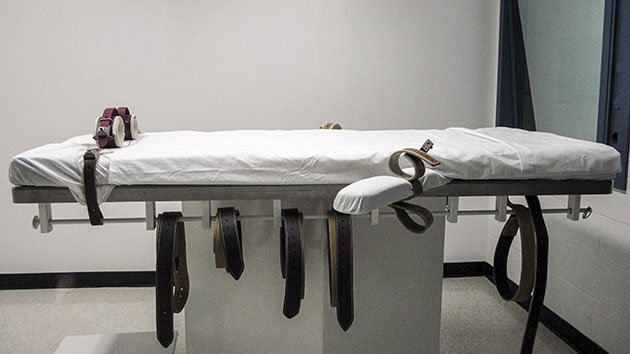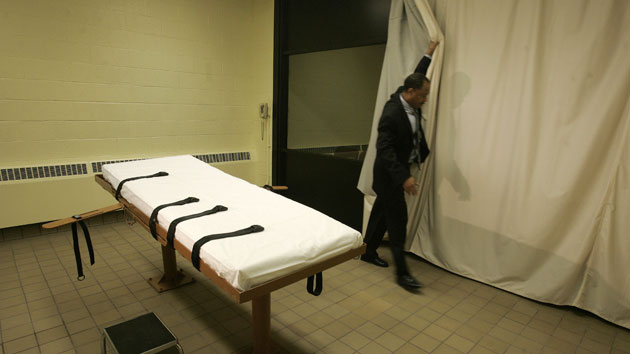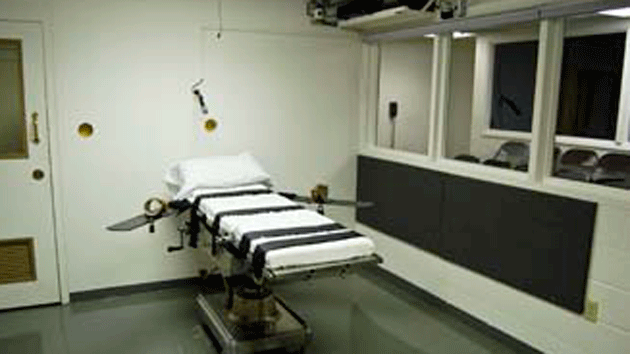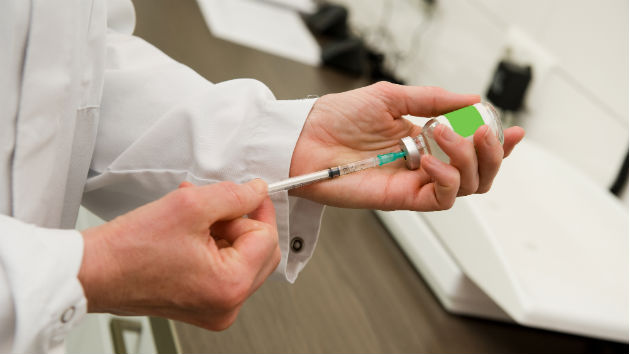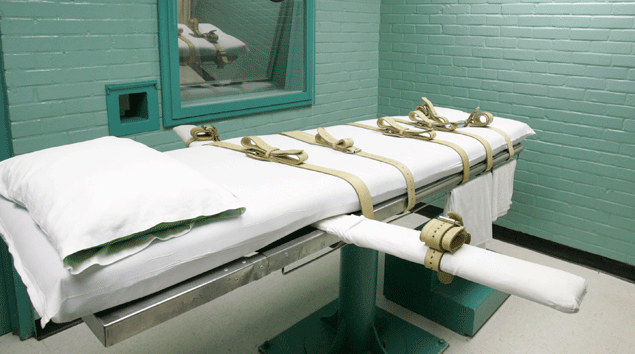
AP Photo/Pat Sullivan
Earlier this month, Oklahoma halted all executions in the state after it nearly executed death row inmate Richard Glossip using the wrong drug, and one that’s not allowed by its own execution protocol. Today, the Oklahoman reports that the state had already made that same error in the execution of another inmate, Charles Warner, in January—it just didn’t notice.
The state halted Glossip’s execution last week after an executioner discovered that the vial of a drug thought to be potassium chloride, which is used in the three-drug cocktail to stop an inmate’s heart, actually contained potassium acetate, a different, less potent drug that’s not allowed by the state’s written protocol. After discovering the mix-up, the state attorney general asked the courts to stay all the executions currently scheduled until officials could investigate further.
As it turned out, state officials had already used the potassium acetate once before, in the execution of Warner, a man who was convicted in 2003 of raping and murdering an 11-month-old baby. Autopsy records show that the syringes used on Warner were labeled as containing potassium chloride, but in fact had been filled from vials of potassium acetate, a substitution that was not indicated in the corrections department execution logs. Dr. Mark Heath, an anesthesiologist at Columbia University and an expert on lethal injection, says, “Until today, no state has acknowledged using potassium acetate for execution by lethal injection, and no state has publicly proposed using it.” The law requires the state to inform a condemned inmate if it plans to change the execution protocol. It appears that this didn’t happen in Warner’s case.
Then again, states haven’t been very forthcoming about much of the process of lethal injection. They’ve passed laws shielding the people involved from public exposure and preventing even the condemned inmates from knowing the source or makeup of the drugs to be used on them. Dale Baich, an assistant federal public defender in Arizona who represented Glossip and other Oklahoma death row inmates in their Supreme Court challenge to lethal injection, said in a statement today that he’ll be continuing litigation against the state to find out more about what went wrong. “We cannot trust Oklahoma to get it right or to tell the truth,” he said. “The State’s disclosure that it used potassium acetate instead of potassium chloride during the execution of Charles Warner yet again raises serious questions about the ability of the Oklahoma Department of Corrections to carry out executions.”
Warner’s execution was supposed to prove that citizens could trust Oklahoma to kill inmates properly. His date with death had been delayed by six months last year after the execution of another inmate, Clayton Lockett, was badly botched after the doctor failed to insert a catheter properly into his vein. (Lockett ultimately died from a heart attack after suffering intensely from the misplaced line.) That execution may have led the US Supreme Court to take up Glossip’s challenge to Oklahoma’s drug protocol and the use of the sedative midazolam. In June, the court ruled against Glossip and allowed Oklahoma to proceed again with executions. State officials expressed confidence that new training procedures and other improvements would prevent any problems with future executions. Today’s news suggest they might have been a little overconfident.
In various challenges to the use of drugs like midazolam in executions, defense lawyers have argued that states are simply conducting unethical medical experiments on inmates, testing out new and different drugs that were designed to help heal people, not kill them. The latest news about the drug mix-up in Warner’s execution will only add fodder to those arguments. It also suggests that Oklahoma is not so different from many other states that have shown that the people today who are involved in executions are often poorly trained and incompetent.
Dr. Jay Chapman, the Oklahoma coroner who essentially created the modern lethal injection protocol, thought the process should be simple and humane. But history proved him wrong. As he observed in the New York Times in 2007, “It never occurred to me when we set this up that we’d have complete idiots administering the drugs.”

